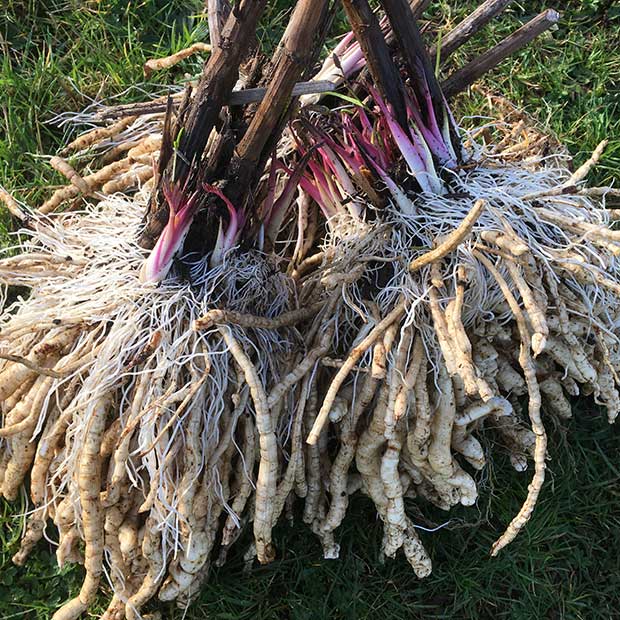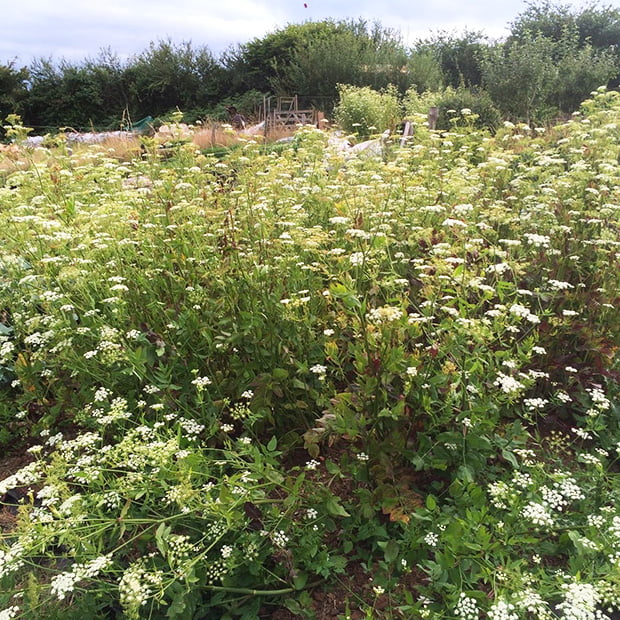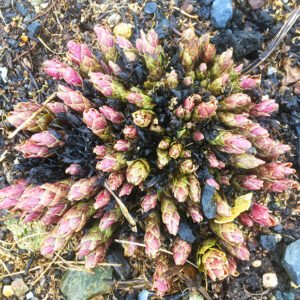Skirret Seed Sium sisarum (pack of 100)
£3.99
SOW THROUGHOUT SPRING AND EARLY SUMMER
A hardy herbaceous root vegetable popular in Tudor and Stuart periods. Sweet clusters of roots can be left in the ground to mature, then harvested for eating and some for re-planting to propagate more roots.
39 in stock
Description
Skirret – Sium sisarum is a hardy herbaceous perennial root vegetable part of the family Apiaceae, that produces a cluster of sweet tasting slender roots. Skirret dates back centuries, pre-dating the potato, and were one of the main root crops eaten across Europe before potatoes were introduced. They fell out of favour because potatoes were easier to prepare, not because of the taste. Flavour is somewhere between a parsnip and a carrot with a hint of pepper. They were popular in Tudor and Stuart periods and were used in sweet and savory dishes. This is seed from a diverse mix of plants and we collect fresh seed every autumn.
How to grow
Skirrets are best sown in spring under cover, but can be sown through the summer months too. Sprinkle skirret seed thinly in a tray of compost and cover with a light layer of compost. They will take 3-4 weeks to germinate but they can be erratic germinators with some germinating immediately and others taking quite a few weeks, so don’t worry if you don’t see seedlings appearing right away. Giving them bottom heat from a heated propagator or heat mat can help speed up germination.
Alternative method: Soak and stratify
This method really helps with maximum germination. Soak seeds for 24 hours in water, drain, discard any seeds that are floating and keep all the seeds that have sunk. Sow thinly in a small tray of moistened compost and cover lightly with compost. Place in a plastic bag in the fridge for 7-10 days. Remove from fridge and then give the seedlings warm conditions as above ( with a heated propagator) or warmth in spring in a polytunnel or greenhouse should suffice. The soak and stratify method really results in the best germination for your skirret seeds.
Prick out seedlings and pot them up to grow on to small plants before transplanting outside. Plant in a sunny position leaving about 30cm between plants. Skirrets like rich deep soil with lots of organic matter, but soil that is friable. They need to be well watered to stop the roots from becoming woody and enjoy some liquid feed. The flowers attract beneficial insects.
Harvesting and propagating
Over the summer the plants will reach about 1m-1.5m tall producing umbels of white flowers and in the autumn the foliage will die right back. For a decent yield it is best to wait until the autumn of their second year before harvesting. Main harvesting period is between November and March while plants are dormant. You can divide the plants from autumn to spring, using some roots for eating and some for re-planting. When your plants are established, you can also pinch off small offsets with growing shoots in the spring to propagate new plants, skirret will self sow as well. Once you have a colony growing it is worth experimenting by leaving some plants to grow for 2 to 3 years before harvesting/dividing to develop better sized eating roots.
Cooking and eating
No need to peel, just give them a good scrub with a vegetable brush. Use skirret raw as a tasty snack, or parboil and deep fry, or roast in the oven with olive oil. Sauteed in a pan with butter and parsley is another delicious way of serving them. They also make a lovely soup. Early shoots can be forced by covering with a bucket and eaten as a sweet spring green vegetable.











